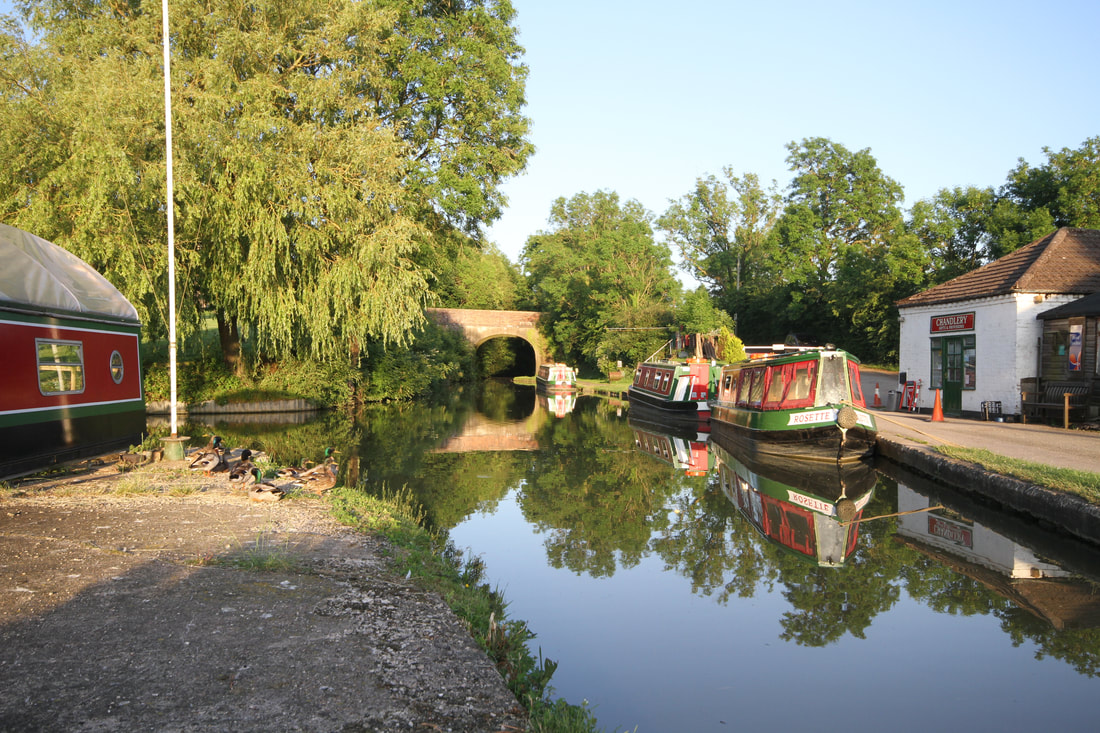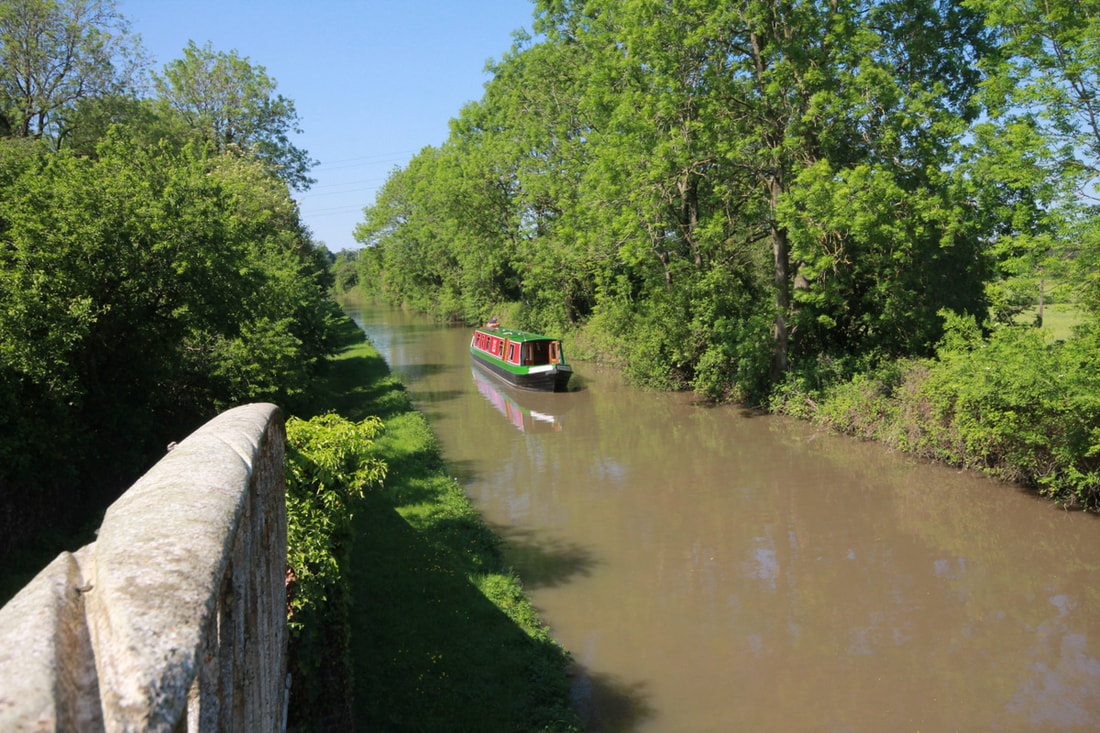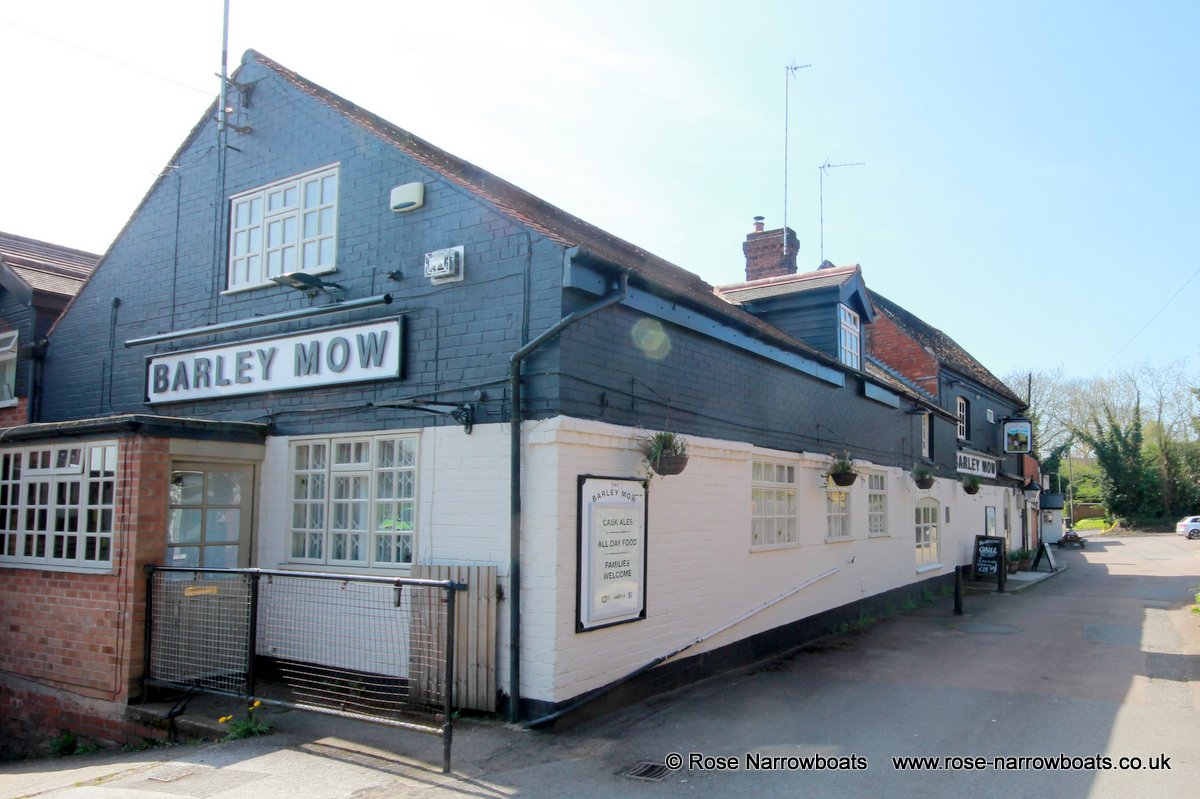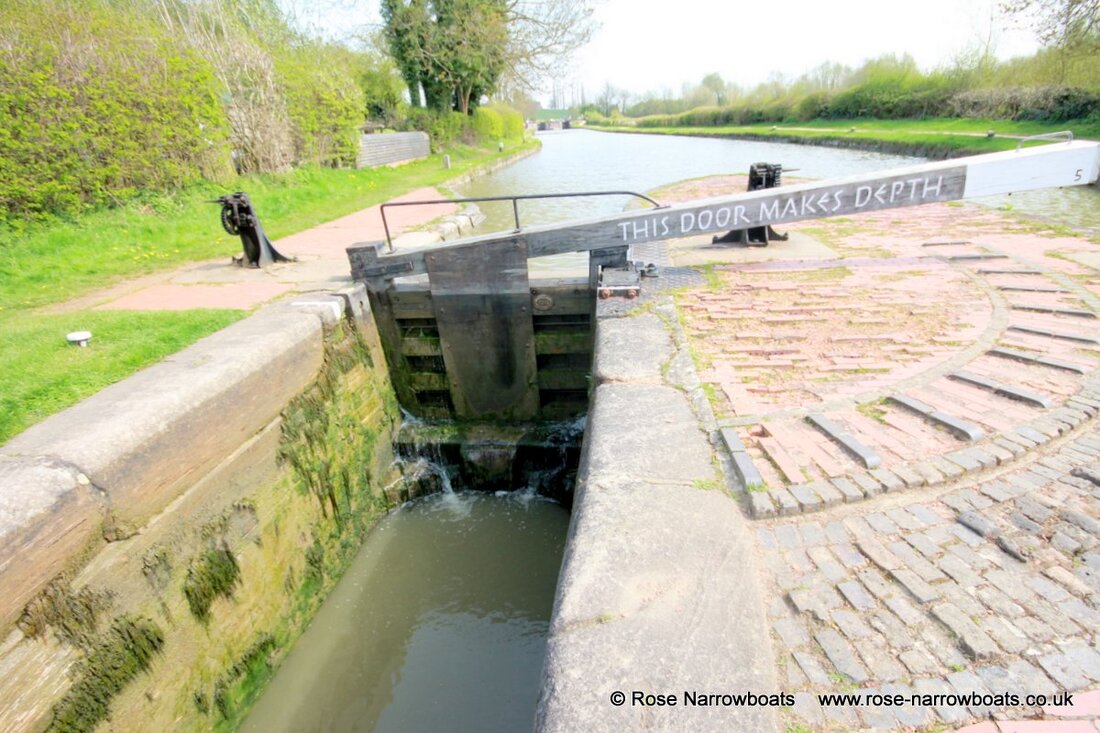|
1 Week Route
|
86 Miles
|
8 Locks
|
43 Hours
|
|
This route takes you on a journey through the rural heart of England. The Oxford Canal was one of the first to be built, construction commencing at Coventry in 1770. Four years later it had reached Napton and by 1778 was open as far as Banbury, 42 miles and 25 locks from the start of your holiday at our base at Stretton-under-Fosse. It took another 12 years to raise the money and complete the canal from there to the Thames at Oxford! Today it is an ideal journey for the novice or seasoned boater alike, through beautiful countryside watched over by the spires of medieval churches to yout destination; the vibrant modern centre of Banbury.
The canal was engineered by James Brindley and built as a “contour canal” which means that the line follows the contours of land with a minimum of earthworks. This created a very tortuous route and the northern section of the canal was modernised in the 1830’s, almost halving the distance from Coventry to Braunston, striding across the countryside with a series of impressive arrow straight cuttings and embankments interspersed with winding sections of the original canal. Starting from our base at Stretton Stop, where loaded boats were once “gauged” to be charged a toll for their cargo you head south, through a short tunnel at Newbold to Hillmorton. As you come out of Newbold tunnel there is a pub on your right hand side, and you can usually moor close by. Its worth knowing as you walk along the access road in front of the pub that this was once the canal. If you walk through the churchyard opposite on the public footpath you can find the original Newbold tunnel, now abandoned. Between Stretton and Hillmorton there are many short “arms” of the canal – short seemingly purposeless length of water which are actually some of the remains of the original route of the canal. They were retained to serve industry – normally flour mills or lime kilns – which had been built alongside the old line. Where necessary these are crossed by graceful cast iron bridges. These bridges are all identical and some of the earliest examples of mass production in the world. The first three locks of your journey are encountered at Hillmorton, where the commercial traffic was so heavy by the late 1830’s the locks were duplicated to speed the flow of traffic between the Warwickshire coalfields and London. Above Hillmorton there are several more long straights on the way to Braunston, a major junction and and one of the historical centres of the UK canal network. There are plenty of moorings here village is well worth exploring with a well stocked supermarket in the village and four pubs. As you head away from Braunston on the last straightened section you pass the abandoned medieval village of Wolfhamcote on your left hand side as you head towards Napton. Careful study of the fields on the right hand side will reveal some unusual craters: these are far more recent history, being made by German bombs in WW2 – an unwelcome testament to the canals continuing importance as an industrial transport link well into the 20th century. One bomb did hit the embankment but it was quickly repaired and the canal reopened in a matter of weeks. At Napton the canal climbs a flight of 9 locks on to the most easterly edge of the Cotwolds before winding its way in glorious isolation across the 10 ¾ mile long summit level to Claydon. The canal now is almost entirely as built and this gives you the experience of two very different styles of waterway on your holiday as the canal reverts to a meandering course almost like that of a small river. You will pass through Fenny Compton, the only habitation of any note adjacent to the canal on this stretch, though Wormeleighton and Priors Marston are only a short walk from the canal and well worth a visit. There is an excellent pub and restaurant, The Hollybush at Priors Marston. The remains of Fenny Compton tunnel, opened out as long ago as 1868 and like the rest of this stretch, teeming with wildlife, provide more interest before reaching the top of the 5 lock Claydon flight, and it is literally downhill all the way now as the canal drops into the Cherwell Valley. 3 locks further on below Claydon you reach the picturesque Oxfordshire village of Cropredy, location of the famous Fairport Convention music festival every August and from there it is a leisurely cruise through 4 more locks right into the centre of Banbury. Keep an eye out for the historic Tooley’s boatyard protected almost like a time capsule in the middle of Banbury’s shopping centre. LTC Rolt’s boat “Cressy” was converted at Tooley’s in 1939 and it is his book Narrow Boat” – an account of his journeys in which the Oxford Canal features prominently – that is widely credited with kick-starting the change of focus to pleasure usage as commercial traffic on the canals declined. If you do not wish to stop and explore Banbury, you may have time to continue further towards Oxford. Aynho, about 5 hours cruising further on is a good destination. |


















